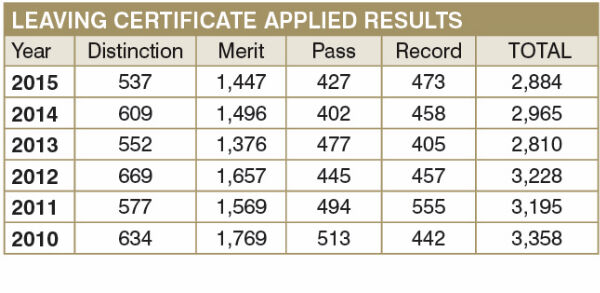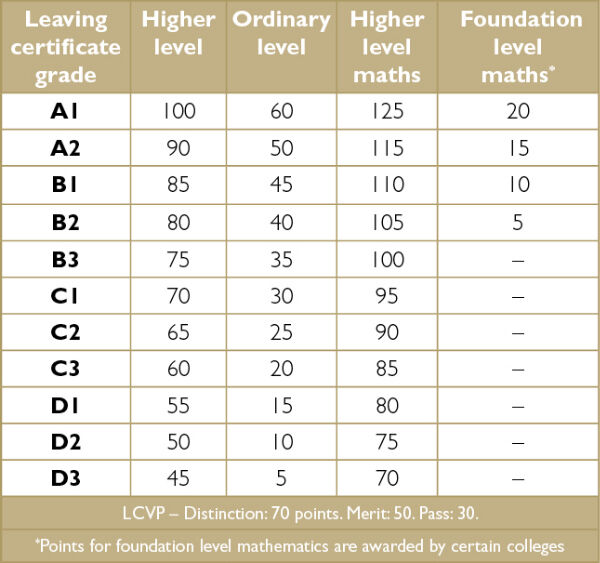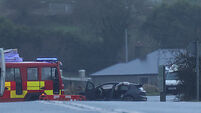Leaving Cert Results: No major changes to grades but maths failure rate rises

The 27% of students examined in maths who took higher-level papers is the same proportion as last year. But the 14,691 getting results in honours papers this morning is nearly 3,500 fewer than those who indicated earlier this year they would do so.
Each year, several thousand drop to ordinary level on or before exam day, but the proportion signalling they would take higher-level maths had been up from 32% to 34% since last year.
And concerns about some students not being able to make the grade may rise, as 764 did not get the minimum D grade needed to pass and gain an extra 25 CAO points. That is 119 more than a year ago, and the 5.2% failure rate is up from 4.5% last year, and 3.3% in 2013 when 429 failed honours maths.
In 2012, the first year that bonus points were offered, numbers taking higher maths jumped from 8,237 to 11,131, or from 16% to 22% of all those taking the subject. The fail rate dropped in the same year from an average just over 3% in preceding years to 2.3%, but has been on the rise ever since.
In response to the figures last year, a spokesperson for Education Minister Jan O’Sullivan said it was an emerging trend and would be closely monitored this year and in 2016. The Department of Education said yesterday that, while there has been a slight increase year on year in the number of E, F, and NG grades, this was factored into project planning when the bonus point scheme was introduced.



“EFNG rates in higher-level maths are still significantly lower than in comparable science, technology, engineering, and maths subjects such as chemistry, physics, and biology. Overall the stabilisation in the numbers taking higher-level maths is welcome.”
The data will be fully analysed in a report expected early next year by the State Examination Commission chief examiner in Leaving Certificate maths.
The numbers sitting higher-level Irish papers continued to rise. While recent studies have shown risks of the language dying out even in Gaeltacht areas, despite growing interest in the language, 19,460 people took higher-level Leaving Certificate Irish. This is over 1,300 more than a year ago, and represents almost 42% of all those examined in the subject, up from 40% in 2014, and from just 37% in 2012.
The improved uptake at higher level, with the numbers achieving honours grades remaining at close to 90% in the same period, is probably attributable mainly to assessment changes. From 2012, the total marks in Leaving Certificate Irish have included 40% for the oral test, which previously was worth 25%.
There are improved results in biology, the most popular optional subject for Leaving Certificate students, with almost 33,800 getting grades in the subject.
Almost three quarters of the 25,600 who sat the higher level paper received an A, B or C, up from 69% to 71% in the previous three years. The proportion who failed at honours level has dropped to 5.1%, from almost 7% a year ago and over 8% in 2012 and 2013.
There were similar improvements in honours and fail grades for ordinary level biology, taken by 8,269 students this year.
The numbers taking chemistry climbed almost 4% to over 8,900, with more As and honours grades awarded than last year at higher level, and fewer students failing. But almost 9% of the 7,533 honours candidates did not pass, which means many of those 650 students might not be eligible for certain science or other degree courses.
Although physics students for Leaving Certificate were almost 5% more than in 2014, rising to over 7,500, nearly one-in-10 who took the subject at higher level failed, up from 8% a year ago.
Geography and history numbers remain very similar to last year, taken by 25,131 and 12,183 students, respectively.
Results in French are being received by almost 26,800 students this morning, a 1% rise almost matching overall Leaving Certificate entry increases.
But German continues to increase significantly in popularity, taken by 7,272 students in June, 414 or 6% more than a year ago. The subject also has one of the highest numbers of students getting a higher-level A, achieved by over one-in-seven of the 5,154 taking German at that level.












